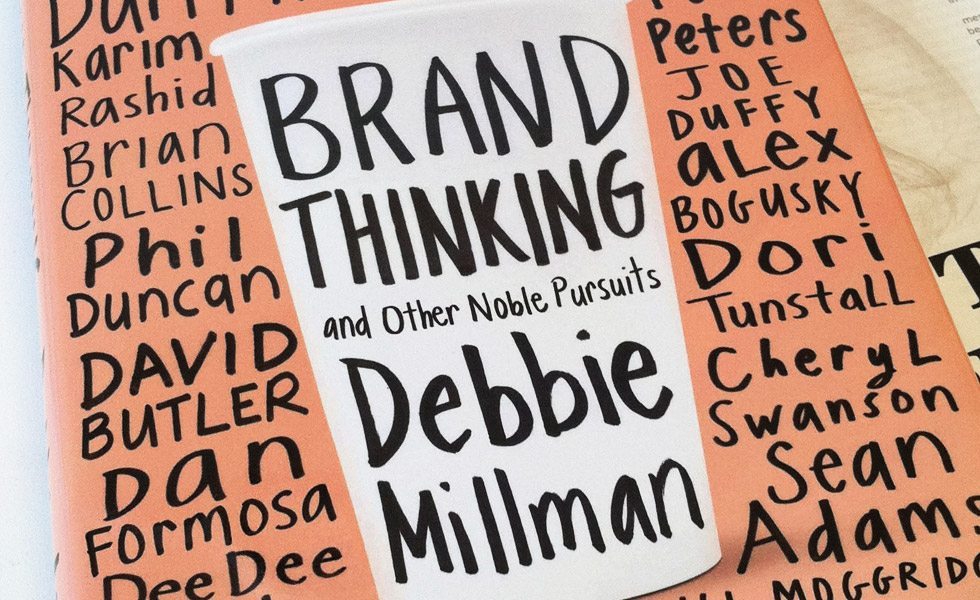Brand Insights
For Health Science Executives
Ten Things Learned from the Branding Masters
Ten Things Learned from the Branding Masters
Branding is not about creating a good logo or product name, it’s about developing a personality for your biotech brand that sets it apart from others in the industry.
How distinct and meaningful is your biotech brand?
After interviewing 20 branding masters, Debbie Millman of Sterling Brands, shared her research and excerpts from her latest book “Brand Thinking and Other Nobel Pursuits.”
Here’s my takeaway from “Ten Things I Learned from the Masters”.
1. There has always been a constant evolution of culture.
It’s what we do with this change that will help shape our businesses and our world towards a better quality of life. As example, in 2004 an article came out about how the iPod was disconnecting people from one another. Now recently we’ve invented social media to begin this interaction once again. How is your biotech marketing team embracing cultural changes?
2. Ideas are easy. Strategy is much harder.
Strategy is the success of branding, but what is strategy?
“Strategy is choosing to perform activities differently, or to perform distinctly different activities than rivals” – Michael Porter, Author/Consultant/Professor Harvard Business School
3. Dissect demographics: Common vocabulary doesn’t equate with common behavior.
One day of working on a creative brief is worth one week of design time. There are sub-cultures inside sub-cultures and it’s sometimes difficult to target your specific biotech audience. You need to go beyond general categories such as investors and researchers.
4. Branding is not about design.
People are afraid of change. Think about how change could make a difference in apositive way. “Who wants to buy a clever piece of design? No one really – they want a product that’s going to work.” – Bruce Duckworth, Creative Director Turner Duckworth
5. Every brand has a story, whether it’s the founder’s story or brand’s reason for being.
A story is a mission. What is your biotech brand’s reason for being? How is it making a difference in the world? “The best brands embody mythic archetypes, they literally are stories” – Brian Collins, Creative Director Collins
6. Aptitude is equivalent to operational excellence.
We need to think about something never invented before. How it’s going to benefit the world and consumers alike. This is the space where biotech brands can thrive!
7. We’re not good at everything.
We need to go deeper into the situation, communities, businesses, etc. to look for the problems that others cannot find. Some things take a day and others take a year. Don’t rush to create the quickest product out there, make sure the quality your biotech brand creates is long term.
8. Some brands can’t make us deeply happy.
“Human beings metabolize their purchases quickly.” – Dan Pink, Author
Brands need to relate to us on a deeper level and do more good for the future and world around us. Generally speaking, if you buy something that has no meaning or positive influence, it quickly goes away and you want something else.
9. Brands can help us feel more connected.
As we see change and diversity among people around the world, we use brands to connect and see what we have in common. We need something that doesn’t just make us feel better about ourselves, but to have a mutual conversation in a more responsible way. That personal connection or bond can be with someone across the room or across the world. Brands help connect people and build lasting relationships. People want to support those they know and trust.
10. The future is what we make it.
We need to look at how we value products to make the world more positive.
We should buy what makes us happy and fulfills us – educate on what is fulfilling because if it’s not, it won’t sell or exist.
Bottomline? How is your biotech brand evolving – changing lives? In this fast-paced digital world, how is it continuing to tell it’s unique story? Are you targeting the right audiences and developing lasting relationships with customers and investors?
